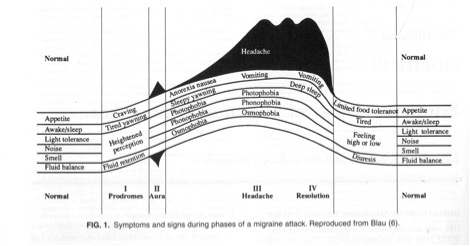Archive for March 2018
Headaches and Spinal Manipulation
Most Common Causes of Back Pain
How to Perfect Your Sitting Posture
Dim Bulb and How Your Chiropractor Could Be the Answer
Qualities to Look for in a Chiropractor
Kissing the Blarney Stone Could Be Bad for Your Back
Ways to Spring Forward Without Injuring Your Back
Headaches
Are Headaches Normal?
Many people believe that it is okay to have headaches. Some even think that headaches are normal. This can be a dangerous misconception as headaches can be an important warning sign that something else may be wrong.
According to a study by the Mayo Clinic, headaches are the 9th most common reason patients see a doctor. The World Health Organization estimates that 50-75% of adults have had a headache in the last year and 30% or more have reported a migraine. In the Global Burden of Disease Study, updated in 2013, headache disorders were the 3rd highest cause of years lost due to disability.
Many people who regularly have headaches reach for medication to relieve the pain. They often develop dependencies on these medications, which have harmful side effects over time such as stomach, liver or kidney problems.
- Relying upon pain numbing medications on a regular basis for headaches is not justified if you know about the latest research and treatments that are available to you. Over 70% of patients who use alternative therapies never informed their medical providers that they used such therapies? Over 70% of patients who use alternative therapies never informed their medical providers that they used such therapies?
Common headache types include: Migraine, Tension Type, Cervicogenic
Migraine: Contrary to popular belief, migraine is not just a bad headache. It’s an extremely incapacitating collection of neurological symptoms that usually includes a severe throbbing recurring pain on one side of the head. It’s often accompanied by nausea, vomiting and extreme sensitivity to light and sound.

What Happens During a Migraine?

22% of the participants reported more than a 90% reduction of their migraines.
50% more participants reported significant improvement in the intensity of the migraines.
After one week of treatment 75% of the subjects reported complete relief of headache.They also noted a significant increase in cervical ROM and a reduction of dizziness.
“Spinal manipulation was as effective as a well established and efficacious treatment (amitriptyline), and on the basis of a benign side effects profile, it should be considered a treatment option for patients with frequent migraine headaches.
Tension-type headaches are the most common form of headache, occurring in about three-quarters of the general population. Tension-type headache is usually described as a pain that feels like a tight band round your head or a weight on top of it. Your neck or shoulder muscles may also hurt along with the headache.

TENSION TYPE HEADACHES
- Female:Male – 60:40
- Lateralization – diffuse bilateral
- Location – diffuse
- Frequency – 1-30 per month
- Severity – mild/moderate
- Duration – days to weeks
- Pain Character – dull
- Triggers – multiple, neck movement not typical
- Associated Symptoms – occasionally decreased appetite, phonophobia or photophobia
Spinal manipulation is an effective treatment for Tension Headaches. Amitriptyline was slightly more effective in reducing pain at the end of the treatment period but was associated with more side effects.
In addition…Four weeks after the cessation of treatment, the patients who received spinal manipulative therapy (SMT) experienced a sustained therapeutic benefit in all major outcomes in contrast to patients that received amitriptyline, who reverted to baseline values. And the sustained therapeutic benefit with SMT seemed to result in a decreased need for over the counter medication.
Almost without exception, chiropractic manipulation of the neck was found to be superior in terms of reducing tension headache frequency, intensity, and improving functional status of patients when compared to other standard medical treatments.
CERVICOGENIC HEADACHES
A cervicogenic headache starts in the cervical spine—your neck. Sometimes these headaches mimic migraine headache symptoms. Initially, pain may begin intermittently, spread to one side of the head, and become almost continuous. Pain can be exacerbated by neck movement or a particular neck position (e.g., eyes focused on a computer monitor).

- Lateralization – unilateral without sideshift
- Location – occipital to frontoparietal and orbital
- Frequency – chronic, episodic
- Severity – chronic, episodic
- Duration – 1 hour to weeks
- Pain Character – non-throbbing, and non-lancinating pain, usually starts in neck
- Triggers – neck movement and posture, limited ROM, pressure over C0-C3
- Associated Symptoms – usually absent or similar to migraine but milder, decreased ROM
110 participants with cervicogenic headache were randomized to receive both cervical and thoracic spinal manipulation, or combined mobilization and exercise. The findings indicated that manipulation was more effective at reducing headache intensity and disability. Additionally, the manipulation group experienced significantly reduced duration and frequency of headaches.
Evidence suggests that chiropractic care, including spinal manipulation, improves migraine and cervicogenic headaches.

HEADACHES AT A GLANCE

Spinal manipulation has been proven effective for many types of headaches and it does not involve medication to cover up the pain. Doctors of chiropractic are well educated in this field and can also diagnose the condition to recommend the most effective treatment, which typically includes exercise and nutrition.
HEALTHY ERGONOMICS

If you have headaches, be sure to check with a health professional for a thorough evaluation.
The best approach is to not develop the problem in the first place.
Take preventive steps:
- Maintain proper body weight
- Exercise regularly
- Each nutritious food
- Reduce stress
- Practice healthy ergonomics
- Maintain proper posture and spinal function
ion










